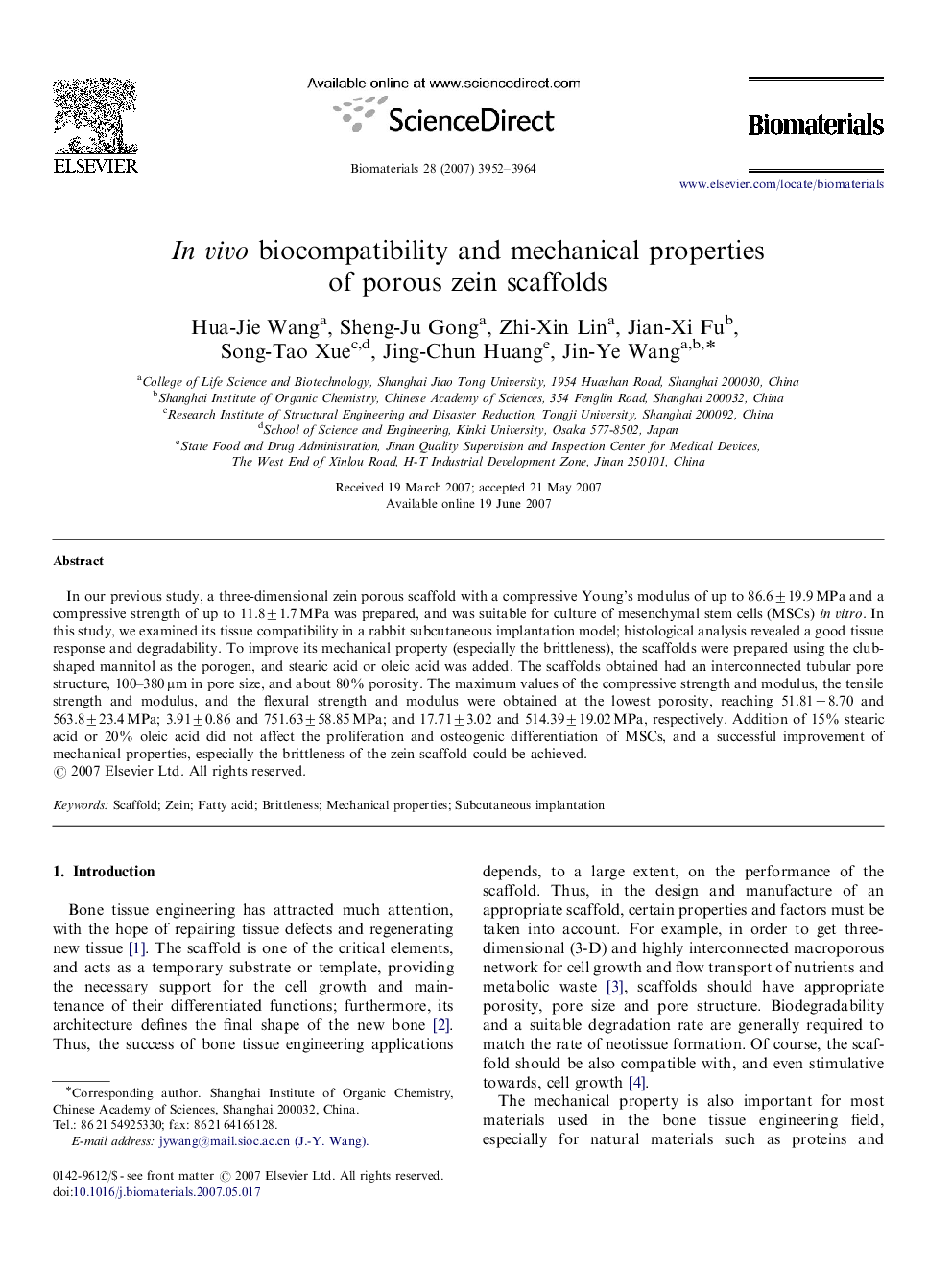| Article ID | Journal | Published Year | Pages | File Type |
|---|---|---|---|---|
| 10337 | Biomaterials | 2007 | 13 Pages |
In our previous study, a three-dimensional zein porous scaffold with a compressive Young's modulus of up to 86.6±19.9 MPa and a compressive strength of up to 11.8±1.7 MPa was prepared, and was suitable for culture of mesenchymal stem cells (MSCs) in vitro. In this study, we examined its tissue compatibility in a rabbit subcutaneous implantation model; histological analysis revealed a good tissue response and degradability. To improve its mechanical property (especially the brittleness), the scaffolds were prepared using the club-shaped mannitol as the porogen, and stearic acid or oleic acid was added. The scaffolds obtained had an interconnected tubular pore structure, 100–380 μm in pore size, and about 80% porosity. The maximum values of the compressive strength and modulus, the tensile strength and modulus, and the flexural strength and modulus were obtained at the lowest porosity, reaching 51.81±8.70 and 563.8±23.4 MPa; 3.91±0.86 and 751.63±58.85 MPa; and 17.71±3.02 and 514.39±19.02 MPa, respectively. Addition of 15% stearic acid or 20% oleic acid did not affect the proliferation and osteogenic differentiation of MSCs, and a successful improvement of mechanical properties, especially the brittleness of the zein scaffold could be achieved.
